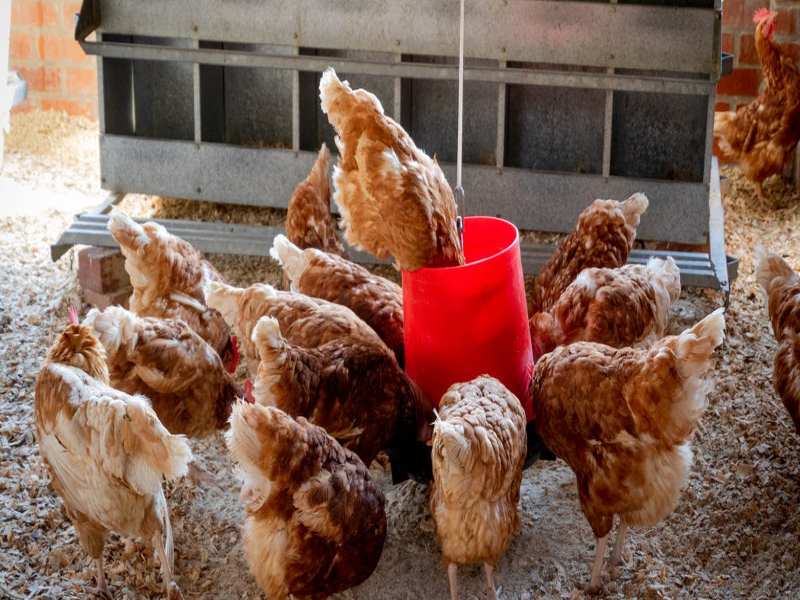
India is pre-dominantly an agricultural country we all know and the country has nearly 70 per cent of its population lives in villages. Most of the rural population of India is solely dependent on agriculture and animal husbandry. We have around 25% of the world’s cattle population, yet we are highly deficient in various livestock products. This is an area of concern surely. Besides poultry, our country has a larger percentage of livestock population of slightly over 530 million. Nevertheless the average production of milk and other livestock products is almost the lowest in the world. As per numerous survey reports and studies it is the malnutrition and low genetic potential of the animals that is responsible for lower productivity of livestock in India.
Recent decade has seen consequent rise in animal feed demand, including cereals and other feeds and specially proteins. Protein intake is expected to increase further as revealed through different studies hence requirements for protein feeds are expected to rise further in coming years. Demand for animal products, especially from poultry and pigs have been rising consistently since last few years. In fact a steady jump in the animal feed requirements for oil cakes and meals has been reported as well. Current COVID situation has dampened prospects – but mostly for the short term. As the economies slowly open up and rumors regarding spread of corona through poultry product consumption subsides, demand for poultry products and eventually poultry feed ingredients are most likely to improve again.

Concerns remain amongst Animal feed industry persons due to ever increasing gap between demand and supply of all kinds of feeds and fodders. The average area for fodder production is much below 5 per cent of the total cultivated area. It may be noted that only during the monsoon season the grazing animals are able to meet their forage requirements from the conventional resources. For rest of the season these animals have to depend on the crop residues or straws of ragi, wheat, paddy, barley, jowar, bajra, etc.
Demand for animal feed is increasing and it is a known fact that a greater percentage of available grains in the country goes for human consumption. Therefore it becomes important for the persons engaged in animal feed manufacture, to consider shifting focus towards utilization of unconventional feed resources that are not competing with human food to feed the animals properly. On the whole India has to emphasize on supplying feed nutrients through non-conventional feeds in coming years.
What are these Non-conventional feed resources or the NCFR? : Non-conventional feed resources (NCFR) generally refer to all those feeds that have not been traditionally used for feeding livestock. Also, they are not commercially used in the production of livestock feeds. The NCFR normally are variety of feeds from perennial crops and feeds of animal and industrial origin. The poor-quality cellulosic roughages from farm residues such as stubbles, haulms, vines and from other agro-industrial by-products, for example slaughter-house by-products and products processed from sugar, cereal grains, citrus fruits and vegetables - they also come under NCFR category. Several known examples include palm leaf meals, palm press fiber, cassava foliage, spent brewer’s grains, sugar cane bagasse, rubber seed meal and some aquatic plants.
NCFR are basically the final products of production and consumption that have not been used by the end user. Additionally these are mainly organic and can be in a solid or liquid form. Feed crops generating valuable NCFR are excellent sources of fermentable carbohydrates. For example sweet potato and cassava for ruminants – they are advantageous in their ability to utilize inorganic nitrogen. Fruit wastes like banana rejects and pineapple pulp comparatively have high sugar content therefore beneficial in acting as good source of energy.
Till now the use of NCFR has been limited. Reasons are:
-
Variations in nutrient level and soil quality, climate, temperature, rain, and different harvest methods
-
Presence of naturally occurring anti-nutritional and/or toxic factors (alkaloids, non-starch polysaccharides, glycosides, tartrates, heavy metals)
-
Presence of pathogenic micro-organisms (Salmonella pathogen is present if waste is not processed or sterilized properly)
-
Need for supplementation (minerals, most limiting essential amino acids)
-
Seasonal and unreliable supply, example wine, apple, dates), Bulkiness, wetness and/or powdery texture
-
Processing requirements (drying, detoxification) (availability of machinery; knowledge of processing; energy source)
-
Lack of research and development efforts
Various measures suggested to overcome the limitations are
1. Need to develop scientific documentation of unconventional feed
2. Identification of additional resources
3. Knowledge regarding highest and threshold level of incorporation of feed necessary.
4. Critical micronutrient which is unavailable, to be supplemented.
5. Biotechnology innovations & processing techniques in order to reduce the problem of seasonal and unreliable supply.
Adoption of alternative feed resources in poultry nutrition.
The poultry industry continues facing the problem of feedstuff shortage and there is a distinctive gap between the requirements and supplies of nutrients. Therefore supplying the non conventional feeds shall be beneficial in filling the gap to a great extent. Also, examining cheaper non-conventional feed resources that can improve intake and digestibility of low quality forages seems to be a “must do" thing for the feed industry.
In present term there is inadequate utilization of these by-products in the poultry feed, due to seasonal availability, high cost of handling and transportation from the production site to the farm, presence of anti-nutritional factors etc. Therefore it is essential to increase feed supplies by growing more fodders, propagating agro and social forestry, improving the nutritive value of crop residues and utilizing other NCFRs. Feedstuffs like fish offal, duckweed and kitchen leftovers (i.e., potato peel, carrot peel, onion peel, and cabbage leftover), poultry litter, algae/spirulina, leucaena leaf, local brewery and distillery by-products, sisal waste, cactus, coffee parchment and coffee pulp, are commonly used in the country and have great potential as feed resources for small and medium size holders of livestock.















